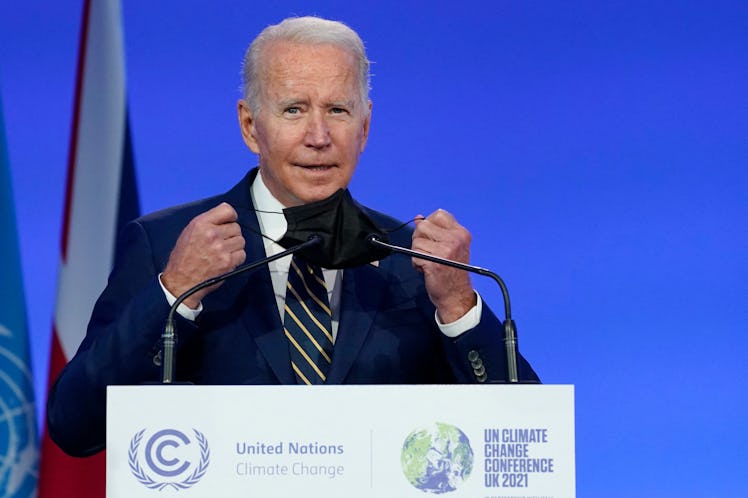Biden's Big Green Energy Push Will Help Millions More Homes Go Solar
Biden announced a slew of executive actions to shore up our renewable energy industry. Here’s what they’d do for you.

On June 6th, the Biden administration announced a series of executive actions aimed at tackling the climate crisis. The new actions utilize the Defense Production Act (DPA) to allow the country to invest in more renewable energy sources — and could actually have a big difference in our daily lives (besides the climate benefits, of course). Here’s what you need to know.
Though a lot of Biden’s climate change legislation was functionally stalled out as a result of the failed Build Back Better agenda, Biden has made some moves on his campaign promises to make a greener economy and world for us and our kids. One of his most recent moves has been dispatching some $500 million set to replace our current school bus fleet with electric ones, a move that would green-ify the nation’s largest public transportation system, with more funding on the way. Now, Biden has released extra details on a big green energy push that’s, among other things, set to get 3.3 million more homes a year transitioned to using solar power.
The new actions are a push for greater investment in, and use of, renewables.
The administration says the new moves will help leverage the power of the funds the government has set to increase US solar manufacturing in the country and will set the groundwork for a major increase in solar power. “We are also now on track to triple domestic solar manufacturing capacity by 2024,” the White House explained in a release.
“The expansions to domestic solar manufacturing capacity announced since President Biden took office will grow the current base capacity of 7.5 gigawatts by an additional 15 gigawatts,” the release states. “This would total 22.5 gigawatts by the end of his first term – enough to enable more than 3.3 million homes to switch to clean solar energy each year.”
So, how are they doing to do that?
There are three main points outlined in the latest green energy push plans, which include:
- Authorizing the use of the Defense Production Act (DPA) to speed domestic production of clean energy technologies. This includes increasing the production of solar panel parts, building insulation and equipment for making and using clean electricity-generated fuels, and updating power grid infrastructure. These changes will allow the USA to increase the amount of available solar energy faster than it would be available otherwise.
- Putting the “full power of federal procurement to work spurring additional domestic solar manufacturing capacity.” Federal procurement, for those who might not know what it is, is when the federal government buys goods and services in order to increase competition and protect consumers from fraud. In other words, the federal government is going to start paying a lot of money to get solar manufacturing off the ground. The federal government will foster Master Supply Agreements for solar systems manufactured domestically, which will increase the efficiency and speed with which electricity providers can start to sell solar. They will also allow “Super Preferences” to apply for domestic content standards and will be consistent with the Buy American Act.
- Create a 24-month bridge “for certain solar imports while reinforcing the integrity of our trade laws and processes.” This means, for now, free-of-charge importing of certain components needed for solar energy sourced from outside the US to ensure the country has access to a “sufficient supply of solar modules to meet electricity generations needs” while domestic manufacturing continues to scale up to meet demand.
“This is the opportunity of a lifetime to replace a dirty, oppressive energy system with a just and clean one,” said Jean Su, director of the Center for Biological Diversity’s energy justice program. “It's vital that Biden go beyond government and business and bring all stakeholders to the table, including environmental justice communities and labor, to map out what our new system of equitable and resilient energy looks like.”
Tackling climate change is one of the big issues of our generation and not addressing and changing the growing concerns will come at a great cost, according to scientists. The Paris Climate Agreement, a legally binding international treaty on climate change, says we need to reach a net zero for greenhouse gas emissions as soon as possible in order to keep the dangerous implications of climate change from destroying everything. Currently, the world is on track for 2.7 degrees of warming above pre-industrial levels by 2100, a reality that would create catastrophic global warming.
This article was originally published on